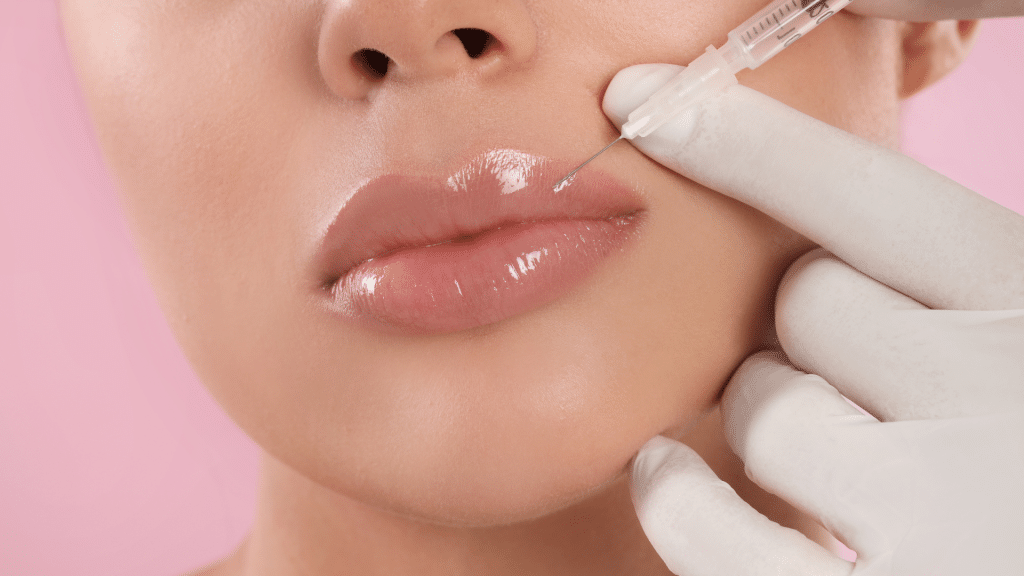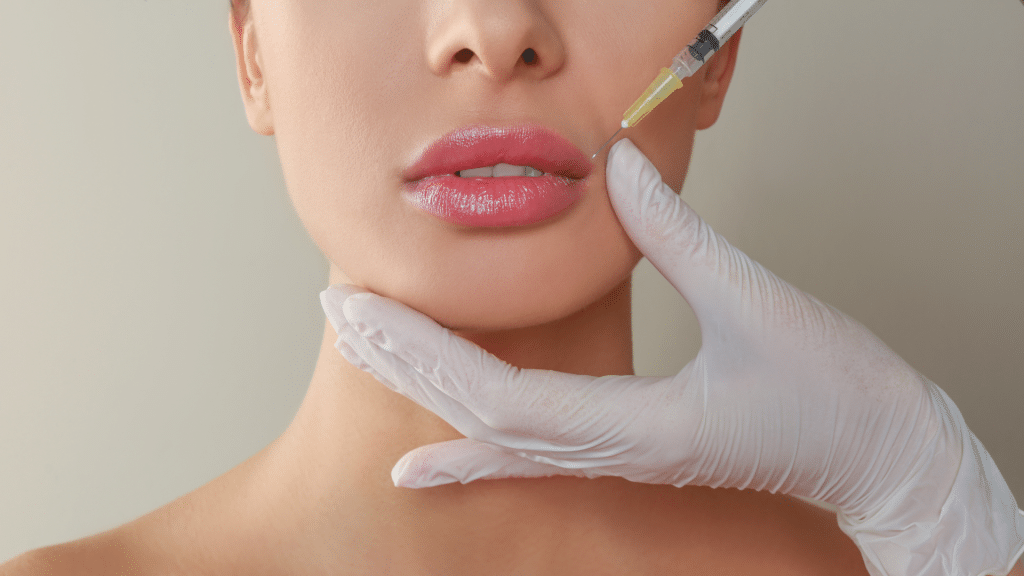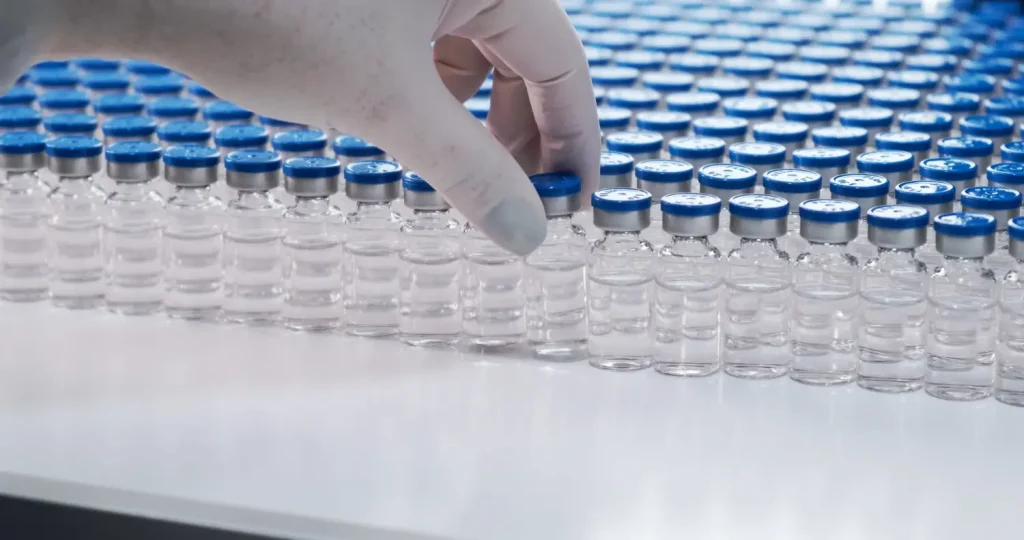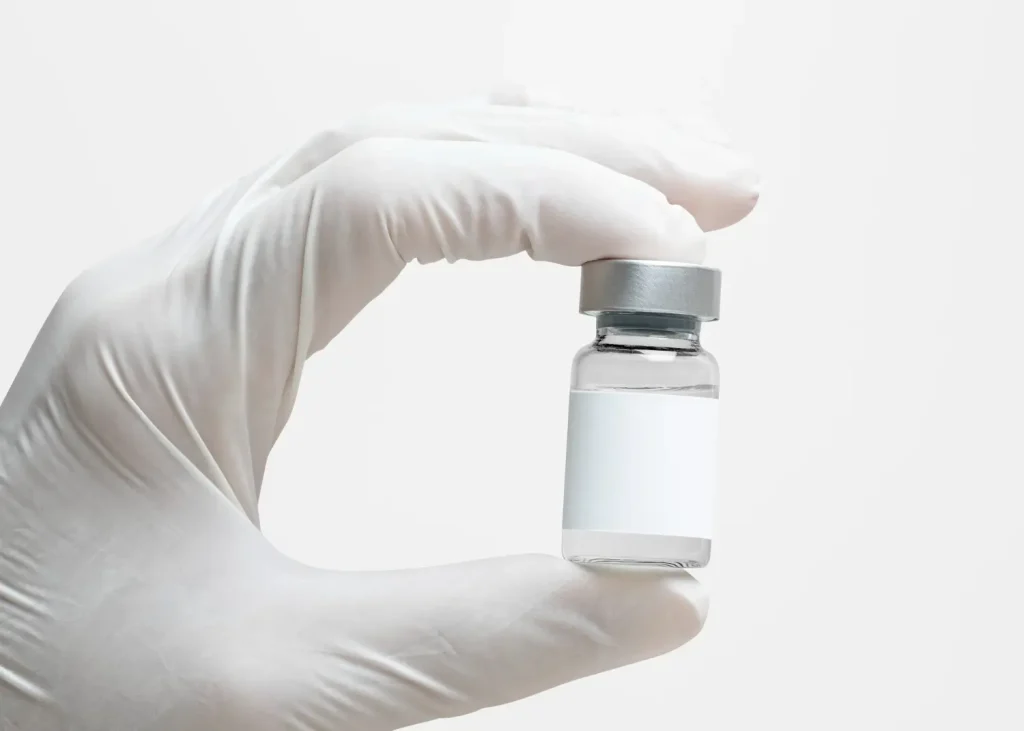Dermal fillers have witnessed a remarkable surge in popularity, offering non-surgical solutions to combat signs of aging. According to the American Society of Plastic Surgeons, over 6 million dermal filler injections were administered in 2022. These minimally invasive procedures provide immediate results, making them an attractive choice for patients seeking facial rejuvenation without the downtime associated with surgery.
Two of the most popular dermal fillers are Juvederm and Radiesse. Juvederm is a hyaluronic acid-based filler that effectively enhances facial volume. Meanwhile, Radiesse employs a different mechanism. Composed of calcium hydroxyapatite particles, Radiesse stimulates collagen production, providing firmness and support.
In this article, we will explore the nuances of Juvederm and Radiesse: their ingredients, safety profiles, efficacy, and potential side effects.
Key Takeaways
- Juvederm uses hyaluronic acid to smooth wrinkles and add volume, making skin look young. It’s suitable for the face and hands.
- Radiesse has calcium particles that help make more collagen. This filler works well for deeper lines and adds shape to cheeks and jawlines.
- Both fillers are FDA-approved but have different risks. Juvederm might cause bruising or swelling, while Radiesse could block blood vessels in rare cases.
- Results with Juvederm show soon after treatment. With Radiesse, improvements last longer because it helps grow new collagen.
- When picking a filler, consider what you want to improve on your face. Then, talk to a doctor to determine which is best for you.
Introduction to Juvederm and Radiesse

Juvederm is a top choice for skin rejuvenation and wrinkle reduction, making it a go-to dermal filler. It’s known for being FDA-approved, highlighting its safety and effectiveness for cosmetic use.
This filler works wonders by adding fullness to the face and hands, making it an excellent option for those looking to enhance their appearance with minimal downtime. Juvederm offers visible improvements in facial contours and smooths out lines, which patients can see when browsing specific procedures like Juvederm eyes before and after. This is crucial when choosing the best treatment for them.
On the other hand, Radiesse is an FDA-approved dermal filler that can be used for different applications, such as facial and hand rejuvenation. By injecting it under the skin, doctors can restore lost volume, smooth out deep wrinkles, and enhance overall texture.
Composition and Properties
Juvederm is made from hyaluronic acid, a substance that’s naturally found in the skin. This makes it a popular choice for smoothing wrinkles and adding volume to the face. Its smooth texture comes from its unique formulation, which varies across different products in the line.
It forms a gel-based consistency that, when injected, acts like a sponge, absorbing moisture and aiding in volume restoration and skin rejuvenation. Its ability to seamlessly integrate with bodily tissues without causing harm makes it an exceptional choice for line smoothing and crease softening.
Radiesse consists of calcium hydroxylapatite (CaHA) microspheres comprising 30% of its formula. This calcium-based dermal filler shines in facial volumization and rejuvenating properties. It’s not just any injectable filler; it’s a powerhouse for cosmetic enhancement and facial contouring, especially effective in wrinkle treatment.
Ideal Use Cases
Juvederm shines for people wanting more fullness in their face and hands. This filler smooths out deep creases and folds, making it a go-to for restoring facial volume or enhancing contours.
Radiesse shines in smoothing out deeper creases and folds that other fillers might need to tackle more effectively. This makes it a star for areas requiring significant volume and rejuvenation, like deep smile lines or marionette lines around the mouth.
Its unique mix, a water-based gel with calcium hydroxyapatite, doesn’t just fill wrinkles but also encourages the body’s collagen production. Over time, this boosts skin health and plumps up areas from within, giving more lasting results of facial rejuvenation than some other options might offer.
Clinical Outcomes
In a clinical study with 208 people, Juvederm showed excellent results for making lips fuller. Three months after getting the treatment, 79% of these people were happy with how their lips looked.

Image Courtesy of Mabrie Facial Institute
A study examining side effects linked to Juvederm accounted for 87.6% of adverse events. Despite this high number, most patients still chose Juvederm and were satisfied with it for facial rejuvenation and aesthetic enhancement.

Image Courtesy of Celibre
Radiesse injections bring significant skin benefits. They stimulate the production of more collagen, elastin, and new blood vessels, giving the skin immediate fullness and improving its health over time.
Yet, Radiesse has some severe risks, too. In rare cases, it can block blood flow or even cause skin death and blindness. These dangers make choosing the right patient and injection technique very important for safety.
Comparison of Side Effects and Risks
Juvederm’s side effects often include bruising, swelling, and redness around the injection site. People might also see a rash, itching, or a change in skin color. Most of these side effects are mild and go away on their own.
Radiesse can sometimes lead to more severe problems. If it gets into a blood vessel by mistake, it could cause problems such as cellulitis, nodules, or even tissue death. It stands out because it’s riskier for causing intra-arterial complications than Juvederm.
Conclusion
Choosing between Juvederm and Radiesse depends on your needs. If you want fuller lips, Juvederm is the way to go. Radiesse might be better for deeper lines and longer-lasting effects.
Both fillers will make your face look younger without surgery. Talk with a doctor to see which one fits you best. They can help pick the suitable filler for your face and hands.
FAQs
1. What’s the main difference between Juvederm and Radiesse?
Juvederm is mostly for smoothing out wrinkles, while Radiesse is great for deeper lines and adding volume.
2. How long do the effects of Juvederm last compared to Radiesse?
Juvederm lasts about 6-12 months; Radiesse can stick around for a year or more.
3. Can anyone use Juvederm or Radiesse?
Most people can, but it’s best to chat with a doctor first to ensure it’s right for you.
4. Are there any side effects with Juvederm and Radiesse?
Both can have side effects like swelling or bruising, which usually disappear quickly.
5. Which is better for removing fine lines around my mouth?
Juvederm is often picked for those pesky mouthlines since it’s super at smoothing things out.
References
Rahman, R., Haroon, S., Rosenberg, G., Bennett, J. R., Hossain, M., Patel, P. M., … & Crooks, C. J. (2022). Comparative safety of non-steroidal anti-inflammatory drugs for exacerbating inflammatory bowel disease: A self-controlled case series and sequence symmetry analysis. BMJ, 378, e069722. https://doi.org/10.1136/bmj-2022-069722
American Society of Plastic Surgeons. 2022 ASPS Procedural Statistics Release. 2023. https://www.plasticsurgery.org/documents/News/Statistics/2022/plastic-surgery-statistics-report-2022.pdf
Bogdan Allemann, I., & Baumann, L. (2008). Hyaluronic acid gel (Juvéderm) preparations in the treatment of facial wrinkles and folds. Clinical interventions in aging, 3(4), 629–634. https://doi.org/10.2147/cia.s3118





















